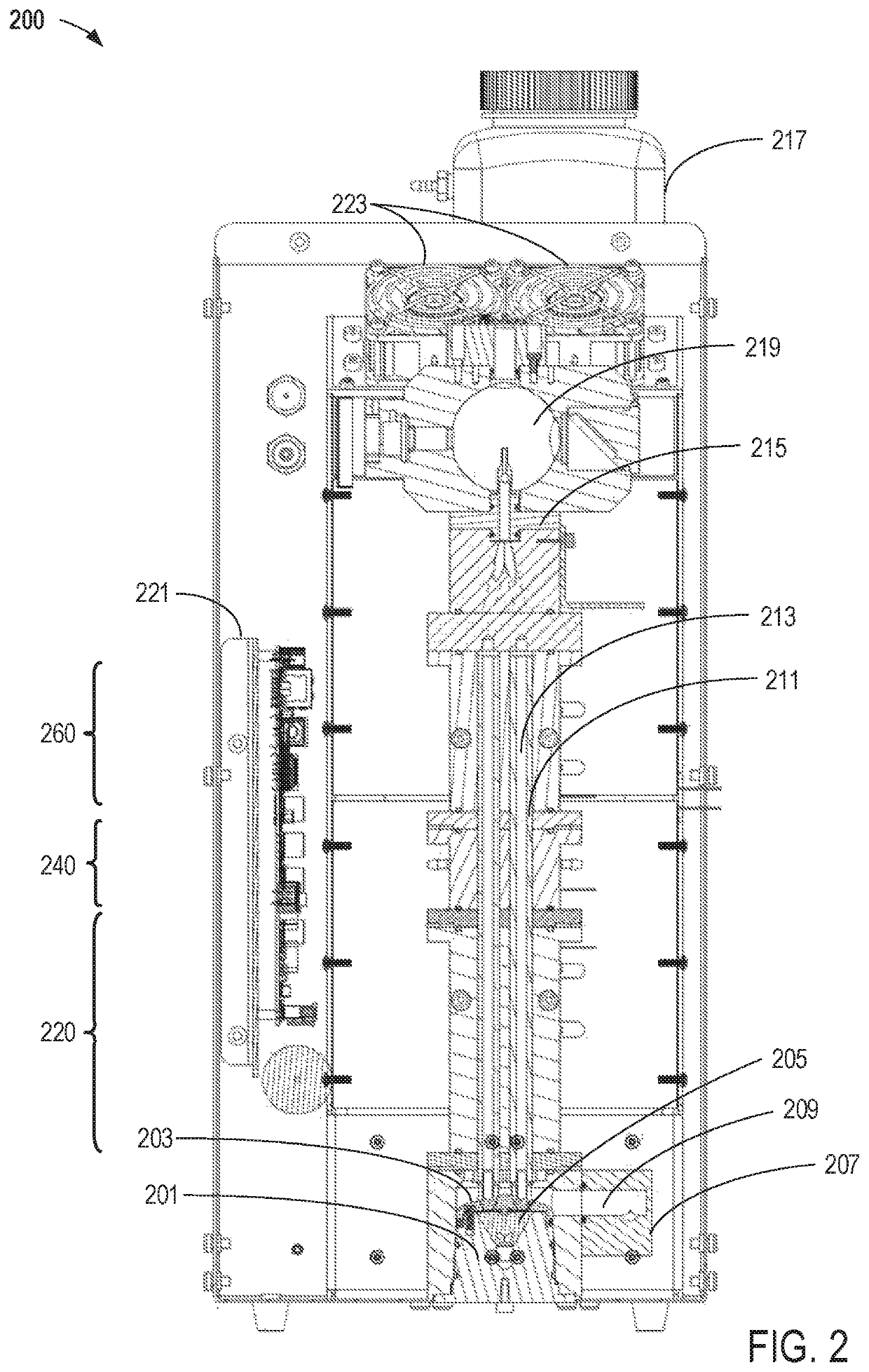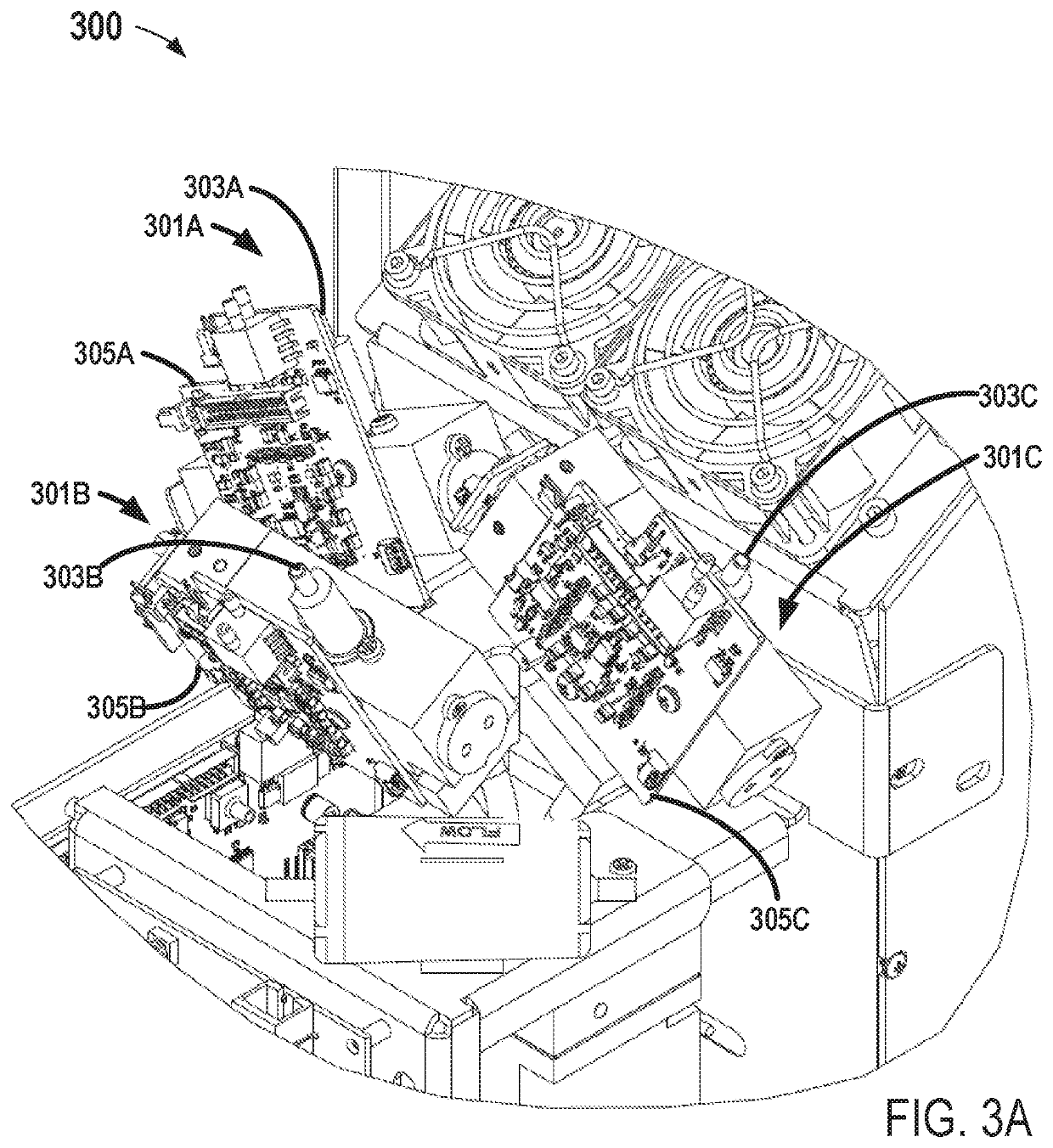Reducing false counts in condensation particle counters
a technology of condensation particle counters and false counts, which is applied in the field of reducing false counts in condensation particle counters, can solve the problems of difficult or impossible to distinguish between real counts and false counts, and the elimination of false counts in the cpc is an exceedingly difficult task
- Summary
- Abstract
- Description
- Claims
- Application Information
AI Technical Summary
Benefits of technology
Problems solved by technology
Method used
Image
Examples
Embodiment Construction
[0013]Reported count rates in contemporaneous water-based condensation particle counters (CPCs) are generally not acceptable for cleanroom applications due to the high false-particle count rate. Current cleanroom requirements (e.g., in the semiconductor industry) specify a stringent false-count rate of less than six counts per hour. Various embodiments disclosed herein include techniques and designs that were developed specifically to reduce or eliminate false counts caused by various factors, such as water bubbles or empty water droplets (e.g., detected “particles” not containing an actual particle serving as a nucleation point). Typically, these particles are created in “events” that result in a burst of particles, varying from several particles to tens and even hundreds of particles or more. These are short events (lasting for seconds), and are separated by long periods of time with no particles generated, but similar events can happen in the real world. However, since these even...
PUM
| Property | Measurement | Unit |
|---|---|---|
| optical particle detector | aaaaa | aaaaa |
| particle concentration | aaaaa | aaaaa |
| Reynolds number | aaaaa | aaaaa |
Abstract
Description
Claims
Application Information
 Login to View More
Login to View More - R&D
- Intellectual Property
- Life Sciences
- Materials
- Tech Scout
- Unparalleled Data Quality
- Higher Quality Content
- 60% Fewer Hallucinations
Browse by: Latest US Patents, China's latest patents, Technical Efficacy Thesaurus, Application Domain, Technology Topic, Popular Technical Reports.
© 2025 PatSnap. All rights reserved.Legal|Privacy policy|Modern Slavery Act Transparency Statement|Sitemap|About US| Contact US: help@patsnap.com



